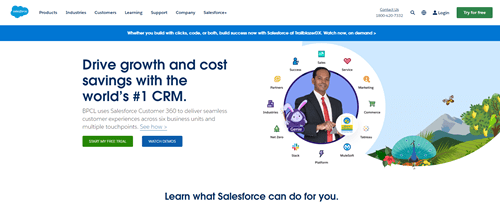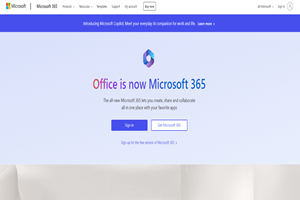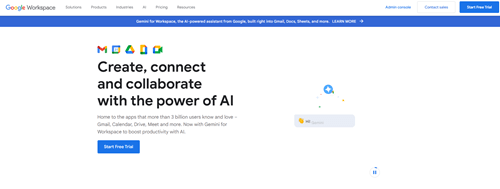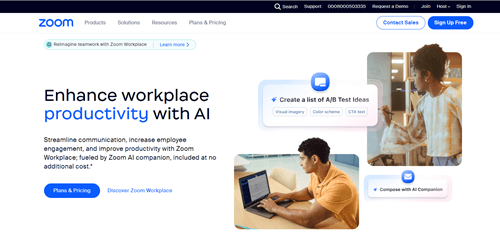
Mastering the SaaS Business Model: A Comprehensive Guide
In the rapidly evolving digital landscape, the Software as a Service (SaaS) business model has emerged as a game-changer, revolutionizing how software solutions are delivered, consumed, and monetized. As businesses increasingly seek flexible, scalable, and cost-effective solutions, the SaaS model has become a driving force, disrupting traditional software licensing and delivery methods. This thorough book explores the nuances of the Software as a Service (SaaS) business model, including its significance, different varieties, underlying theories, and useful applications in various industries.
What is the SaaS Business Model?
The SaaS (Software as a Service) business model involves delivering software applications over the Internet on a subscription basis. Instead of purchasing and installing software on individual devices, users access SaaS applications through web browsers or dedicated client interfaces. This model eliminates the need for upfront software licensing fees and hardware investments, offering businesses a more cost-effective and scalable solution. SaaS providers manage the software’s infrastructure, maintenance, updates, and security, while users benefit from easy access, regular updates, and flexible payment options.
The SaaS business model typically includes features such as:
Scalability:
SaaS applications are designed to scale effortlessly to accommodate growing user bases and evolving business needs. Users can easily adjust their subscription plans to access additional features or accommodate increased usage without disruption.
Accessibility:
SaaS applications can be accessed from any device with an internet connection, enabling users to work remotely and collaborate seamlessly across different locations. This accessibility fosters productivity and flexibility in today’s distributed work environments.
Regular Updates and Maintenance:
SaaS providers are responsible for maintaining and updating the software to ensure optimal performance, security, and compliance with industry standards. Users benefit from continuous improvements and enhancements without the hassle of manual updates or upgrades.
Integration Capabilities:
SaaS applications often integrate with other software systems and platforms, allowing seamless data exchange and workflow automation. This interoperability enhances efficiency and enables organizations to leverage investments in complementary tools and technologies.
Pay-Per-Use Options:
Some SaaS providers offer pay-per-use or pay-as-you-go pricing models, allowing users to pay only for the resources or features they consume. This flexible pricing structure enables cost optimization and aligns expenses with actual usage, which is particularly beneficial for businesses with fluctuating demand.
Data Security and Compliance:
SaaS providers implement robust security measures to protect user data and ensure compliance with regulatory requirements. These measures include encryption, access controls, regular audits, and adherence to industry-specific standards such as GDPR or HIPAA, instilling user confidence and trust.
Why is it important to follow the SaaS Business Model?
Adopting the SaaS business model offers numerous advantages for both software providers and customers, making it an increasingly important approach in today’s digital landscape:
Recurring Revenue Streams:
For software providers, the SaaS model enables predictable and recurring revenue streams through subscription-based pricing, fostering long-term customer relationships and a more sustainable business model.
Lower Upfront Costs:
Customers benefit from lower upfront costs than traditional software licensing, paying a subscription fee instead of a large one-time purchase price.
Scalability and Flexibility:
Because SaaS solutions are so easily scalable, they encourage agility and adaptation by enabling firms to quickly modify their expenses and use them in response to changing needs.
Automatic Updates and Maintenance:
Software vendors handle all maintenance, security patches, and updates, guaranteeing that users never have to worry about manual updates or additional IT work to stay up to speed.
Accessibility and Collaboration:
With SaaS applications accessible from any internet-connected device, users can work remotely and collaborate seamlessly, enhancing productivity and enabling a distributed workforce.
SaaS Model Types
While the core concept of the SaaS business model revolves around delivering software over the Internet on a subscription basis, there are various types and approaches within this model. Here are some common SaaS model types:
Freemium Model:
- Offers a basic version of the software for free, with optional upgrades to premium, paid plans for enhanced features.
- This model attracts users with a low barrier to entry while monetizing through premium offerings.
Subscription-Based Model:
- Users pay recurring subscription fees (monthly, quarterly, or annually) for continued access to the software.
- Pricing structures may vary based on user count, feature sets, or usage levels.
Usage-Based Model:
- Charge customers based on usage metrics, such as data storage, bandwidth utilization, or API calls.
- This model aligns costs with actual usage, providing flexibility for customers with fluctuating needs.
Tiered Pricing Model:
- Offers the software at multiple price levels, each tier providing a distinct set of features and functionalities.
- Customers can choose a tier matching their requirements and budget, allowing customization and scalability.
Enterprise Model:
- This model is tailored for large enterprises and includes dedicated support, specialized pricing, and deployment options.
- They are designed to meet enterprise-level clients’ unique needs and demands, often involving customizations and integrations.
The Fundamental Equation of SaaS
At the core of the SaaS business model lies a fundamental equation that determines the success and profitability of a SaaS company:
Customer Lifetime Value (LTV) > Customer Acquisition Cost (CAC)
This formula emphasizes the crucial need to maximize client lifetime value while obtaining and keeping clients at a reasonable cost. SaaS companies must work hard to ensure that the money they get from each customer throughout their lifetime is greater than the money they spend finding and keeping them.
How would the SaaS business model apply to Businesses/Industries?
Numerous advantages and opportunities are provided by the SaaS business model, which can be implemented in a variety of industries and business types:
Small and Medium-sized Businesses (SMBs):
SaaS solutions offer SMBs affordable access to enterprise-grade software, enabling them to leverage powerful tools and capabilities without significant upfront investments.
Startups and Entrepreneurs:
The SaaS model allows startups to launch and scale their software offerings quickly, minimizing infrastructure costs and enabling rapid iteration and customer feedback loops.
Large Enterprises:
Enterprise-level SaaS solutions offer scalability, flexibility, and reduced IT overhead, allowing large organizations to streamline operations, enhance collaboration, and adapt to changing business needs.
Vertical Industries:
SaaS solutions can be tailored to specific industries, such as healthcare, finance, retail, or manufacturing, providing specialized functionality and compliance with industry-specific regulations.
Horizontal Applications:
SaaS offerings like customer relationship management (CRM), project management, and productivity tools can be utilized across various industries and businesses, enabling broad adoption and scalability.
How does the SaaS business model work?
To access and utilize the software, users of the SaaS business model must pay a recurring cost. This revenue model is based on subscriptions. This is how it usually operates:
Acquisition:
Software providers attract potential customers through various marketing and sales channels, often offering free trials or freemium versions to showcase their products.
Onboarding:
Customers sign up for the SaaS service, providing billing and user information, and are granted access to the software.
Subscription Management:
Customers are billed regularly (monthly, quarterly, or annually) based on their chosen subscription plan and usage.
Delivery and Support:
The software supplier hosts and maintains the application, guaranteeing its security, performance, and availability. The service includes constant updates and customer support.
Retention and Expansion:
SaaS providers focus on retaining existing customers by delivering value, addressing their evolving needs, and offering opportunities for expansion through additional features, users, or integrations.
Recurring Revenue:
Successful SaaS businesses generate predictable and recurring revenue streams from their customer base, fostering long-term growth and profitability.
SaaS Business Stages
SaaS businesses typically go through several stages as they grow and evolve, each with its challenges and opportunities:
Startup Stage:
This initial stage focuses on developing a minimum viable product (MVP), validating the market, and acquiring early adopters.
Growth Stage:
As the customer base expands, the emphasis shifts to scaling operations, optimizing customer acquisition and retention, and securing funding for further growth.
Maturity Stage:
Established SaaS businesses focus on maintaining market leadership, enhancing product offerings, and exploring new revenue streams or expansion opportunities.
Renewal/Expansion Stage:
Existing customers are approached for subscription renewals, upsells, or cross-sells, leveraging their familiarity with the product and the value it provides.
Potential Exit Stage:
Successful SaaS companies may consider exit strategies, such as acquisitions or initial public offerings (IPOs), providing liquidity for investors and founders.
Tools that Help to Grow SaaS Businesses
To support and enhance the growth of SaaS businesses, various tools and platforms can be leveraged:
Customer Relationship Management (CRM):
Tools like Salesforce, HubSpot, and Zoho CRM help manage customer interactions, sales pipelines, and customer data.
Marketing Automation:
Platforms such as Marketo, HubSpot, and Pardot enable automated marketing campaigns, lead nurturing, and customer engagement.
Analytics and Business Intelligence:
Products and services such as Looker, Mixpanel, and Google Analytics offer important insights into consumer behavior, usage trends, and business success.
Customer Success and Support:
Tools like Intercom, Zendesk, and Freshdesk facilitate customer support, feedback management, and proactive customer success initiatives.
Billing and Subscription Management:
Platforms like Recurly, Chargify, and Zuora help manage subscription billing, payment processing, and revenue recognition.
Development and Deployment:
Tools like GitHub, CircleCI, and AWS enable efficient software development, version control, and deployment processes for SaaS applications.
The Pros of the SaaS Business Model
The SaaS business model offers numerous advantages for both software providers and customers:
Recurring Revenue Streams:
Software providers benefit from predictable and recurring revenue streams, enabling better forecasting and long-term growth planning.
Lower Upfront Costs:
Customers enjoy lower upfront costs and easy access to enterprise-grade software without significant upfront investments.
Automatic Updates and Maintenance:
Software vendors handle all maintenance, security patches, and updates, guaranteeing that users never have to worry about manual updates or additional IT work to stay up to speed.
Accessibility and Collaboration:
With SaaS applications accessible from any internet-connected device, users can work remotely and collaborate seamlessly, enhancing productivity and enabling a distributed workforce.
Reduced IT Overhead:
Customers benefit from reduced IT overhead, as the software provider is responsible for hosting, maintaining, and securing the application and its associated infrastructure.
Rapid Time-to-Value:
SaaS solutions can be deployed and accessed quickly, enabling businesses to realize value and productivity gains faster than traditional software implementations.
The Cons of the SaaS Model
While the SaaS business model offers numerous advantages, it also has certain limitations and challenges:
Internet Dependency:
SaaS solutions require a stable internet connection, which can be challenging in areas with poor connectivity or during outages.
Data Security and Privacy Concerns:
Even with SaaS providers’ security precautions, some companies could still be worried about data privacy and the dangers of keeping confidential data on external servers.
Integration Challenges:
Integrating different SaaS solutions with preexisting on-premises or cloud apps can be challenging and require more resources or customization.
Vendor Lock-In:
Switching from one SaaS provider to another can be difficult due to data migration challenges and compatibility issues, potentially leading to vendor lock-in.
Limited Customization:
Large-scale customization to satisfy particular business requirements may be limited because SaaS solutions are usually made to cater to a wide range of users.
Ongoing Costs:
Although SaaS removes the need for upfront expenses, companies still need to account for regular subscription fees, which can add up over time and possibly surpass the price of a conventional software license.
Software/Applications using the SaaS business model:
Salesforce:

- Salesforce offers a cloud-based CRM (Customer Relationship Management) platform that helps businesses manage sales, marketing, customer service, and more.
- It provides a comprehensive suite of tools for lead management, pipeline tracking, customer engagement, and analytics, accessible via subscription-based pricing.
Microsoft 365 (formerly Office 365):

- Microsoft 365 is a suite of productivity and collaboration tools delivered as a cloud-based service, including Word, Excel, PowerPoint, Outlook, Teams, and more.
- Users can access these applications from any device with an internet connection, enabling seamless collaboration, document sharing, and real-time communication.
Google Workspace (formerly G Suite):

- Google Workspace offers cloud-based productivity tools, including Gmail, Google Drive, Google Docs, Sheets, Slides, and Meet.
- It enables users to create, edit, and collaborate on documents, spreadsheets, presentations, and more, securely stored in the cloud and accessible from anywhere.
Zoom:

- Zoom is a cloud-based video conferencing and collaboration platform that allows users to host online meetings, webinars, and virtual events.
- With features such as HD video and audio, screen sharing, and chat, Zoom has become popular for remote work, distance learning, and social gatherings.
Slack:

- Slack is a cloud-based messaging and collaboration platform designed to streamline organizational communication and teamwork.
- It offers channels for team discussions, direct messaging, file sharing, and integration with third-party tools, enhancing productivity and fostering a connected workplace culture.
Who Best Fits a SaaS Business Model?
Although the SaaS business model can be used by many other types of companies and sectors, the following may be especially good fits:
Small and Medium-sized Businesses (SMBs):
SMBs can benefit from the affordability, scalability, and reduced IT overhead offered by SaaS solutions, enabling them to access enterprise-grade software without significant upfront investments.
Startups and Rapidly Growing Companies:
SaaS solutions allow startups and rapidly growing companies to quickly deploy and scale software solutions without requiring extensive infrastructure investments, enabling agility and responsiveness to changing business needs.
Businesses with Distributed or Remote Workforces:
Organizations with employees or teams distributed across multiple locations can leverage the accessibility and collaboration capabilities of SaaS applications to enhance productivity and seamless collaboration.
Companies Seeking Cost Optimization:
Businesses looking to optimize their IT costs and shift from capital expenditures (CapEx) to operating expenses (OpEx) can benefit from SaaS solutions’ subscription-based pricing model.
Industries with Strict Compliance and Security Requirements:
SaaS providers often invest heavily in security and compliance measures, making SaaS solutions viable for industries with stringent regulations, such as healthcare, finance, and government.
FAQs
How does the SaaS business model differ from traditional software licensing?
Conventional software licensing usually entails paying an upfront amount for a perpetual license and recurring maintenance fees. The SaaS model, in contrast, charges a recurring fee for users to access and utilize the software hosted by the provider.
What are the benefits of the SaaS model for customers?
Key customer benefits include lower upfront costs, scalability and flexibility, automatic updates and maintenance, accessibility from any internet-connected device, and reduced IT overhead.
How do SaaS providers generate revenue?
SaaS providers generate revenue through recurring subscription fees customers pay to access their software solutions. Revenue streams can be based on pricing models, such as flat-rate subscriptions, tiered pricing, usage-based billing, or freemium models.
What is the freemium model in SaaS?
A basic program version is free under the freemium model, with the option to upgrade to premium, paid plans with more features and capabilities. With time, this strategy hopes to turn free users into paying clients by drawing them in with an offer.
How does the SaaS model impact software updates and maintenance?
The software provider is responsible for hosting, maintaining, and updating the program under the SaaS model. Without manual installation or additional IT work, users immediately receive updates and security fixes, guaranteeing they always have access to the newest features and functionalities.
What are some challenges associated with the SaaS business model?
Challenges may include customer acquisition and retention, managing churn rates, ensuring data security and compliance, seamless integration with other systems, scalability, performance as user bases grow, and potential vendor lock-in for customers.
Conclusion
The SaaS business model has revolutionized how software solutions are delivered, consumed, and monetized. By embracing this innovative approach, software providers can tap into recurring revenue streams, foster long-term customer relationships, and deliver a superior user experience. In contrast, customers benefit from cost-effective, scalable, and constantly updated solutions. As businesses prioritize agility, cost-efficiency, and digital transformation, the SaaS business model is poised to become increasingly prevalent across industries. Software providers that adapt to this model and effectively navigate its nuances will be well-positioned to succeed in the ever-evolving digital landscape.




